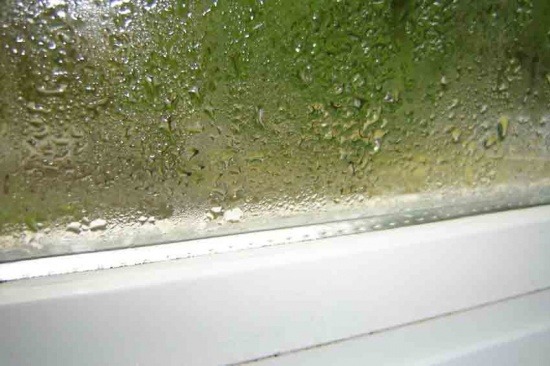MENU


When you see moisture on your windows, do you start to feel a bit worried? Most homeowners know that window condensation can be a bad sign. But the fact of the matter is, this is not always true. Condensation on the outside of the window is simply a matter of outdoor humidity — and is actually a sign that your windows are efficient and well-sealed. There are really only two times that you need to be worried about window condensation in your Dayton home, and those are as follows.

1. When the Window Condensation Is Between the Glass
You see some wetness on the window, and you reach to wipe it away with a cloth. The moisture doesn’t go anywhere. Does this situation sound familiar? The condensation does not wipe away because it is between the two panes of glass. This is the first type of window condensation you need to worry about, and that’s because it is a sign that your windows aren’t doing their job anymore. Moisture only accumulates between the glass panes when air starts leaking in between the panes — and air starts leaking between the panes when the window sash starts deteriorating and pulling away from the glass.
If you do nothing about window condensation between the glass panes, two things will happen. First, your energy bills will continue to increase as warm air seeps into your home through the gap between the window sash and pane. Second, your window will continue to deteriorate due to the constant exposure to moisture. The wood will start to rot and may even grow some mold, which does not make for a healthy home.
2. When the Window Condensation Is Inside and Constant
Condensation appears on the inside surface of the glass when your indoor air is humid. This is a problem that you generally see in the summer. You may notice the condensation most in the morning after your window has cooled off in the night air. Interior condensation does not mean there is anything wrong with your window, and occasional condensation is not a huge issue. When you do need to worry is when the interior condensation is present day after day. The constant presence of moisture can damage the windows — even if they were in good shape when the condensation began to appear.
Luckily, both of these “serious” window condensation issues are pretty easy to solve. You can take care of interior condensation by lowering the humidity level in your Dayton home. Install a dehumidifier, and make a few small changes, such as using your exhaust fan more often and getting rid of house plants, to further reduce humidity levels.
To remedy condensation between the window panes, you really need to replace the windows. If they are still under warranty, your window replacement company will likely replace them under the terms of your warranty. If the windows are older, replacing them will take care of the moisture issue. New windows made from quality materials, like Fibrex®, are less likely to develop leaks and between-pane condensation than those made from vinyl or wood.
If your windows have suffered due to condensation, contact Renewal by Andersen. We will conduct a free consultation in your Dayton home. Our estimates are good for one year, and our top-quality windows come with one of the best warranties in the industry.
Topics: Dayton homes, Window Condensation Problems